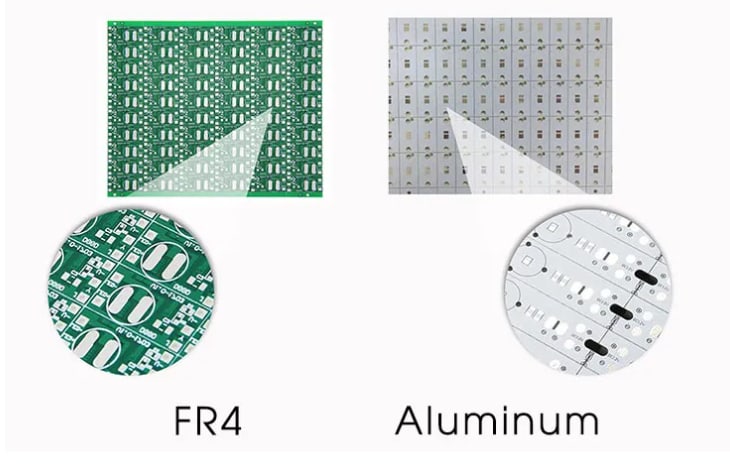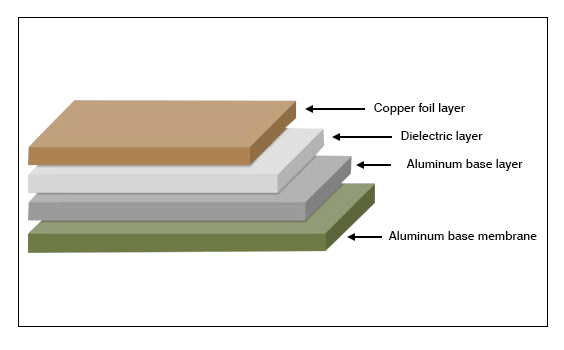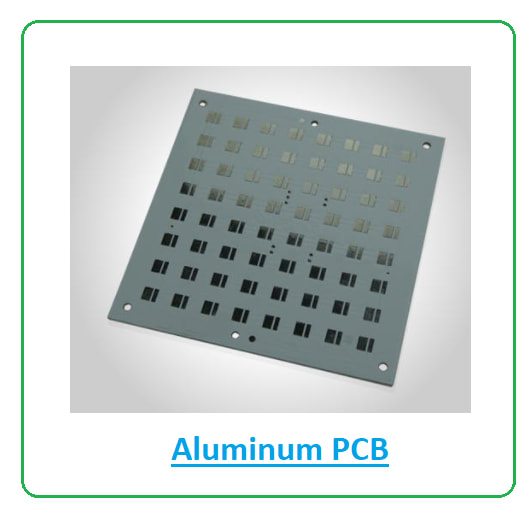Aluminium PCB, introduction and applications.
Follow articleHow do you feel about this article? Help us to provide better content for you.
Thank you! Your feedback has been received.
There was a problem submitting your feedback, please try again later.
What do you think of this article?
In this post today, I’ll walk you through Aluminium PCB in detail.
PCB(Printed Circuit Board) is the basic building block of most modern electronic units. From single-layer PCB used in digital camera circuits to 60-layer PCB used in supercomputers, these boards ensure simple, compact, and less cumbersome designs. PCB designs provide both mechanical support and conductive path for the electrical components mounted on the board. They are widely used in portable electronics and wearable products, opening the door of opportunities for designers to create less erratic and less expensive designs, removing the need for conventional and hectic point-to-point construction of electronic devices.
Different types of PCBs include single layer, double layer, multiple layers, and rigid, rigid-flex, flexible, and aluminium circuit boards. In this post today, we’ll discuss Aluminium PCB only.
Let’s get started.
What is Aluminium PCB?
The Aluminium PCB, also known as Aluminium Clad or Thermally Conductive PCB, is a special type of PCB that consists of thin thermally conductive and electrically insulating dielectric material.
Normally plastic or fiber glass substrate is used in the making of regular PCB, however, in the case of Aluminium PCB, the metal substrate is used; the reason it is also referred as metal base PCB.
Cost-effectiveness and high thermal conductivity are what make these boards stand out from the series of other circuit boards.
For instance, an FR4 PCB is 1.5mm thick and comes with a thermal resistance of 20-22 degrees per watt whiles an Aluminium circuit board is 1. 5mm thick and comes with a thermal resistance of 1-2 degrees per watt.
Aluminium designs are highly reliable and durable and don’t exhibit contraction or expansion issues since they can dissipate heat really well compared to regular FR4 PCBs.
The basic structure of the Aluminium Circuit Board contains four layers:
Aluminium Base Membrane Layer:
The aluminium base membrane acts as a protective layer and keeps the aluminium surface secure from scraping and unwanted etching. It comes in two types i.e. Less than 120 degrees or around 250 degrees.
Base Aluminium Layer:
This is the Aluminium layer composed of the metal substrate. The commonly used thickness of this metal base is 1mm. The metal base factors include thermal coefficient, mass, firmness, strong point, cost-effectiveness, and thermal conductivity.
Insulating Dielectric Layer:
This is the dielectric layer made up of electrically insulating and thermally conductive material. The main purpose of this material is to dissipate heat and maintain the overall temperature of the project. The dielectric layer stands between the base Aluminium layer and the conductive copper layer.
Circuit Layer:
This is the conductive copper layer used to provide a conductive path for the electrical components. Its thickness ranges from 1 to 10 oz.
Types of Aluminium PCB
Aluminium circuit boards are mainly used in electronic projects that require heat dissipation and the insulating dielectric is suitable for providing an appropriate exit for the heat created, helping to maintain the temperature of the entire project.
The following are the different types of Aluminium PCBs available in the market.
Through-Hole Aluminium PCB
To design a Through-Hole Aluminium PCB, you need to backfill and predrill a single aluminium layer before applying the laminate material. This process will ensure the formation of multi-layer construction. And before applying the final touch through drilling, you need to laminate the thermal material on both sides of the board.
Multilayer Aluminium PCB
This type of PCB includes multiple thermally conductive dielectric material layers and is widely used in power supply products. In this design, the dielectric stands between one or more layers of circuitry attached with blind vias, also known as a signal or thermal vias. These circuit boards ensure effective heat transfer in multi-layer construction since single-layer construction is not very suitable for heat transfer solutions.
Flexible Aluminium PCB
A flexible Aluminium PCB contains polyimide resin integrated with ceramic filters that guarantee high flexibility (you can twist and turn the PCB as per requirement) and remarkable thermal efficiency. Be careful while folding this PCB into the desired shape, since you cannot alter the final product once it acquires a certain shape.
High-Frequency Aluminium PCB
The High-Frequency Aluminium PCB is highly flexible due to insulating material containing polyolefin or polyimide material.
Where It Should Be Used:
The Aluminium PCB is widely used for applications that require heat dissipation since the dielectric insulating material is an ideal fit to reduce the heat produced during the project and can endure high temperatures really well.
Aluminium circuit boards are used where the lightweight package is required as they ensure less package size due to the presence of aluminium metal substrate which is lightweight compared to fibre glass and ceramic materials.
Based on non-toxic Aluminium material, Aluminium boards are environmentally friendly and contribute zero pollutants to the environment, which makes them an ideal match for power supply applications including DV/AC converters and switching regulators.
Aluminium boards are reliable and show stable performance and are widely used in audio equipment such as input and output amplifiers and power amplifiers.
The Aluminium metal base makes these boards highly durable and suitable for applications that can withstand extreme environments.
These boards are employed in the automotive and RF industry as they are reliable and offer effective space utilization due to the less package size of the aluminium metal base.
The Aluminium designs are used in mounted LEDs at higher current and can keep temperature tolerance within limits. An aluminium circuit design ensures the longer lifespan of an LED device and offers more stability. You can witness aluminium substrates in stoplights, street lights, and household lighting.
Aluminium circuit designs exhibit high dielectric strength and electromagnetic shielding and are widely employed in power device surface mount technology.
That’s all for today. Hope you’ve enjoyed reading this article. If you’re unsure about anything, you can approach me in the section below. I’d love to help you in the best way possible. Thank you for reading this article.




